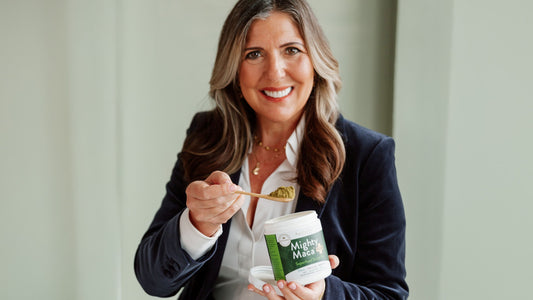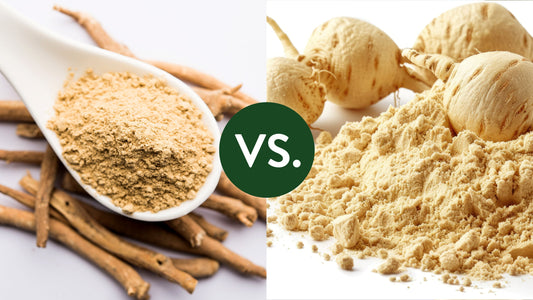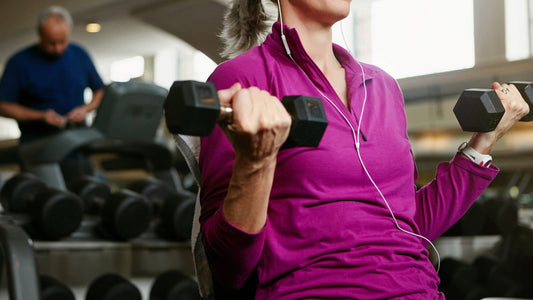D3, K2, and menopause. Three things you don’t often hear in one sentence, unless you’re a women’s hormone fanatic like me. I started researching the connection between vitamin D and female hormones years ago, after noticing that so many women I saw in my clinic were deficient in vitamin D.
Over the years, the connection has grown more apparent, and there’s been a ton of research published on the way vitamin D levels affect health. Vitamin D deficiency has been potentially linked to everything from autoimmune disease to bone strength, mood symptoms, heart disease, and even cancer.
In this article, we’ll take a look at the ways vitamin D works in your body — and look at why it likely needs to be a D3 K2 pairing if you’re thinking about supplementing.

Vitamin D In Menopause
First, let’s talk about vitamin D and menopause.
I go into this in-depth in my book, The Hormone Fix , but one of the things I encourage you to do is have your levels of vitamin D tested if you’re experiencing menopause symptoms like mood swings, hot flashes, night sweats, anxiety, fatigue, or weight gain.
Because here’s the truth: most people have suboptimal levels of vitamin D. And it’s worse in the winter, the farther north you live, and the darker your skin tone is. (1)
Add menopause to the equation, and it’s almost a given that your vitamin D levels are less than ideal. (2) After all, as you age, your ability to absorb vitamin D in your intestines declines, as does your ability to produce adequate vitamin D in your skin and kidneys. (3)
Let’s take a look at how low vitamin D levels show up in your body.
Vitamin D Insufficiency Vs Deficiency
It’s important to point out that, as with many nutrients, there’s a difference between optimal levels and outright “deficiency.”
Blood levels of vitamin D below 30 ng/ml are considered insufficient, values lower than 20 ng/ml deficient, and values below 7 ng/ml severely deficient. (4) Official guidelines state levels of 20 ng/mL or above are adequate for most people for bone and overall health. (5) But for the most part, we really want to see that vitamin D up between 30-80 ng/ml. (6)
Vitamin D Deficiency In Menopause
Unfortunately, suboptimal levels of vitamin D are very common in menopause. (7)
And when your levels of vitamin D are less than ideal, it could result in some serious health consequences.
At the top of the list? Bone fractures and osteoporosis.
Vitamin D plays an important role in calcium homeostasis, bone metabolism, and muscle strength and function. And since with menopause comes the loss of estrogen, another critical bone and muscle-building component — it’s a double whammy for your chances of breaking a bone and ending up with a long-term disability later in life.
Some of the other things that are potentially associated with lower vitamin D levels include (3,8):
Hot flashes
Night sweats
Breast cancer
Fat metabolism
Vaginal atrophy
Vaginal dryness
Mood symptoms
Sexual dysfunction
Cardiovascular disease
Urinary tract infections and leaking
Vitamin D Breast Health
One of the connections researchers have observed is a link between vitamin D and breast health. It seems that women with lower levels of vitamin D could be at higher risk for breast cancer.
By some estimates, it could be as much as 45% more risk. Breast cancer patients also appear more likely to have lower vitamin D levels as well. (9,10,11)
There was one study that looked at women who worked outdoors for long stretches of their lives — people like farmers or construction workers. When researchers compared their breast cancer risk to women who worked inside, they found that women who had 20 years or more of exposure to the sun regularly had the lowest risk of breast cancer. (12) Scientists believe this could be because vitamin D plays a role in breast cell growth.
How To Get Enough Vitamin D
So now that we’ve looked at some of the ways low levels of vitamin D can affect your body, how can you make sure you’re getting enough?
There are three ways to get vitamin D:
Through your diet
From the sun
Supplementation

Vitamin D In Food
For the most part, we just aren’t eating enough foods that have high levels of vitamin D. In fact, according to government calculations, 97% of women get less than the estimated average requirement (EAR) of vitamin D from diet…which is saying something, because so many processed foods are fortified with it. (13)
Yes, there are foods like beef liver and sardines that are high in vitamin D, but these aren’t exactly staples of the American diet these days. And not too many people are swallowing cod liver oil, either.

Vitamin D From The Sun
So that leads us to getting vitamin D from sun exposure. Your body makes vitamin D when the sun hits your skin. There’s an organic compound called 7-dehydrocholesterol which absorbs UV B radiation. That’s converted to previtamin D3 which then isomerizes into vitamin D3. (14)
But, as we all know, the sun’s getting hotter. And even short bouts of exposure to the sun leads to the risk of skin-damaging exposure to UV radiation, and the possibility of skin cancer — not to mention sun spots and wrinkles. (15,16)
Which is why most of us either stay inside, cover up with hats and long sleeves, and slather on sunscreen. Which blocks the process of vitamin D synthesis. So even though there’s some evidence to suggest ample summertime exposure to the sun likely leads to stores of vitamin D for the winter, we can’t take full advantage of that loophole, because we’re rightfully trying to preserve our skin health!
And then, when it’s cloudy during the winter, there just aren’t usually enough UV-B rays to help you make vitamin D.

Vitamin D Supplements
And then there are vitamin D supplements.
There are two basic types of vitamin D:
D3 (cholecalciferol)
D2 (ergocalciferol)
D3 is the superior type — it’s the form of vitamin D that’s made in the body and found in foods. It’s a much more “active” form of vitamin D. That means your body can use it better — and it actually can raise your vitamin D levels.
D2 is much less expensive to manufacture, but it’s not as effective at raising your vitamin D levels as D3.
Vitamin D3 And K2
When you supplement with vitamin D, it could increase calcium levels in your blood.
You see, vitamins D and K are both fat-soluble vitamins that play a central role in how your body metabolizes calcium. Vitamin D promotes the production of vitamin K-dependent proteins, which require vitamin K for carboxylation. (17)
In other words, when you supplement with vitamin D without the addition of vitamin K…calcium could build up in your blood, tissues, and arteries — and potentially increase your blood pressure…which is something we definitely don’t want to do. (18)
That’s why I always recommend taking both vitamin D and K2 together. By combining vitamin D3 with K2, you ensure there’s enough K to shunt the calcium to your bones where it belongs!
This is the vitamin D3 K2 supplement I personally use.
How Much Vitamin D For Menopause?
There isn’t one standard vitamin D dose for menopause. The amount you need to take depends on how low your levels are.
Sometimes, I’ll prescribe a very high dose of vitamin D3 K2 for a short period of time to help someone get their levels up to where they need to be.
But in general, 250 mcg (10,000 IU) of vitamin D to 45 mcg of vitamin K is the ratio that I’ve seen makes the most sense for people trying to support healthy vitamin D levels in the body.
This is the same ratio you’ll find in my Ray of Strength D3 K2 supplement.
Best Vitamin D For Menopause
Does vitamin D help with menopause? I’ve seen it with my own eyes. And D3 with K2 is one of the most important vitamins for post-menopause, because of the massive way it supports bone health, breast health, and vaginal health.
When you’re looking for a vitamin D supplement, make sure to select one that includes D3 (because it’s the most easily absorbed form), and don’t forget to make sure it also has K2 in the formula.
Check out my Ray of Strength D3 K2 formula here.
Both D and K are fat soluble, so be sure to eat plenty of healthy fats when you take your D3+K2 supplement!
D3 K2 Final Thoughts
You have vitamin D receptors all over your body — in the small intestine, large intestine, T and B lymphocytes, brain, mononuclear cells, and skin. Vitamin D is crucial for insulin production, immune function, and bowel function. It’s meaningful for your heart health and your bone health.
Vitamin D even helps to regulate the growth of vaginal epithelial cells, which means it’s crucial for helping to prevent vaginal atrophy and dryness.
And it’s absolutely crucial for your body in menopause.
I would highly recommend testing to see if your vitamin D levels are low, and finding a high-quality D3 K2 vitamin to help you maintain optimal levels.
For many women, D3 and K2 are that magic combo that helps them feel “normal” again when menopause is wrecking their mood, sleep, and sanity.
If you notice that you feel happier and your menopause symptoms are less during the summer, it could be vitamin D is the very thing you need to investigate.
Be sure to check out my Ray of Strength D3 + K2 formula for the highest quality, highly absorbable vitamin D with K2 on the planet.




